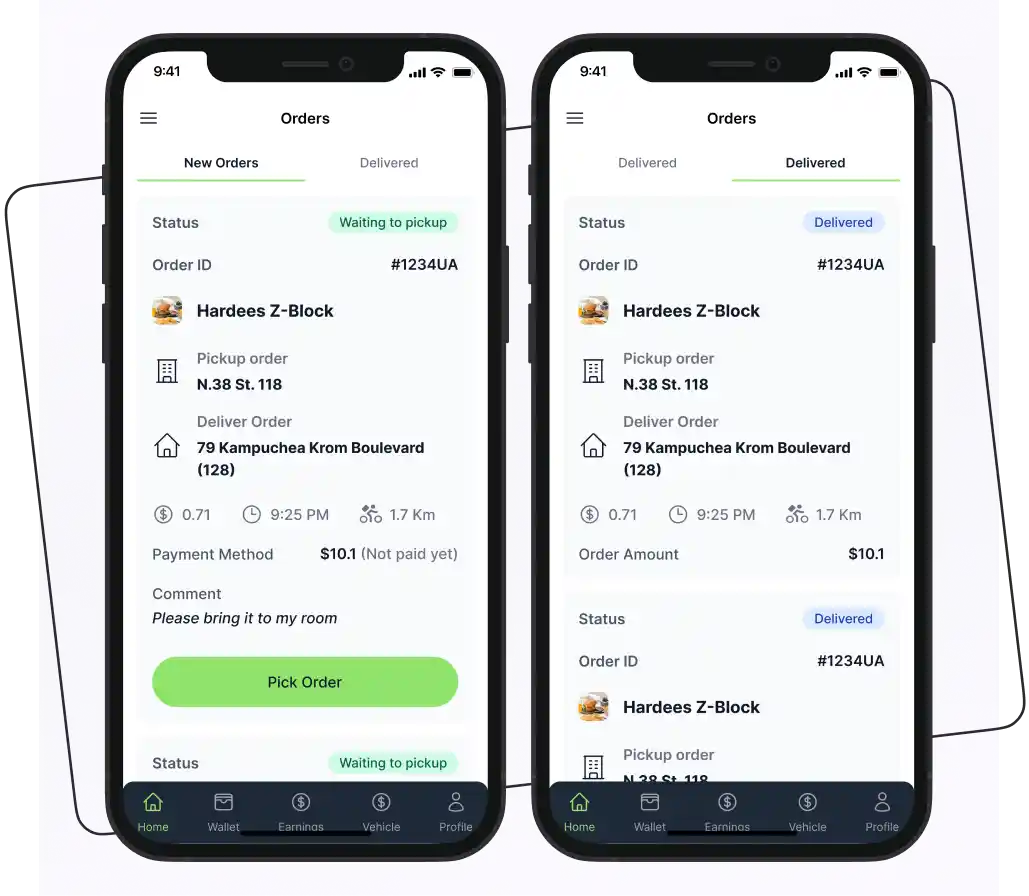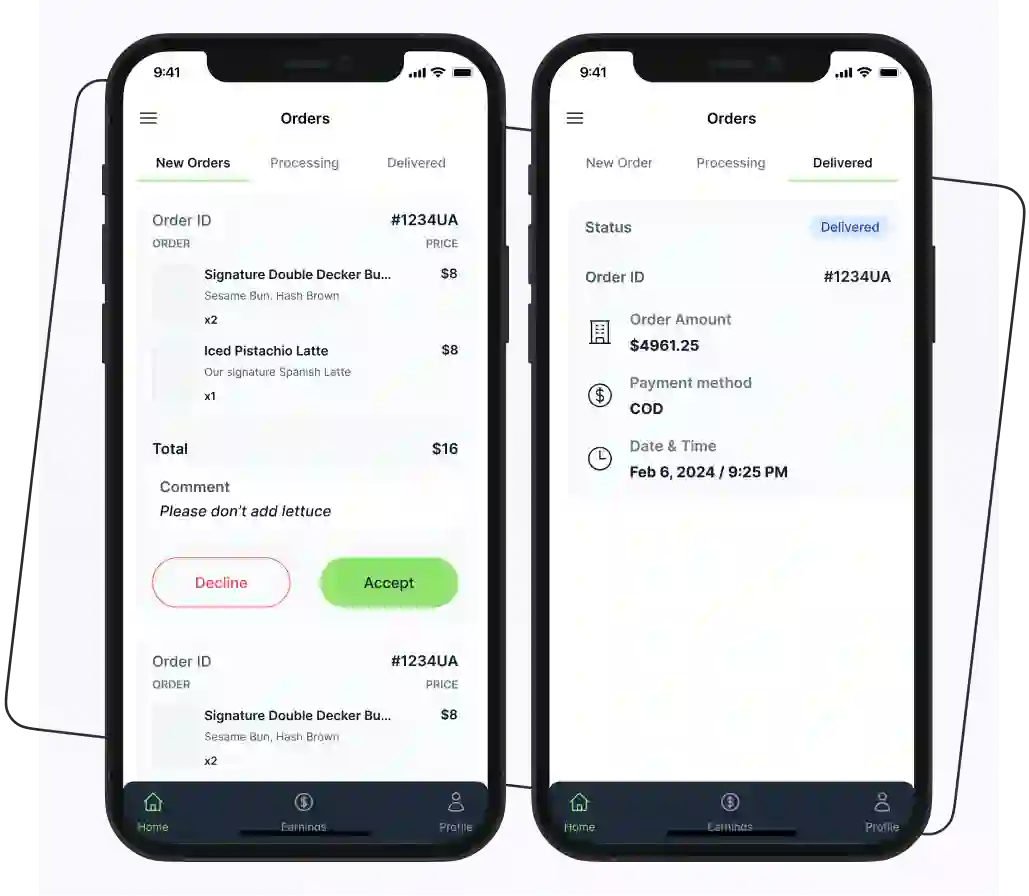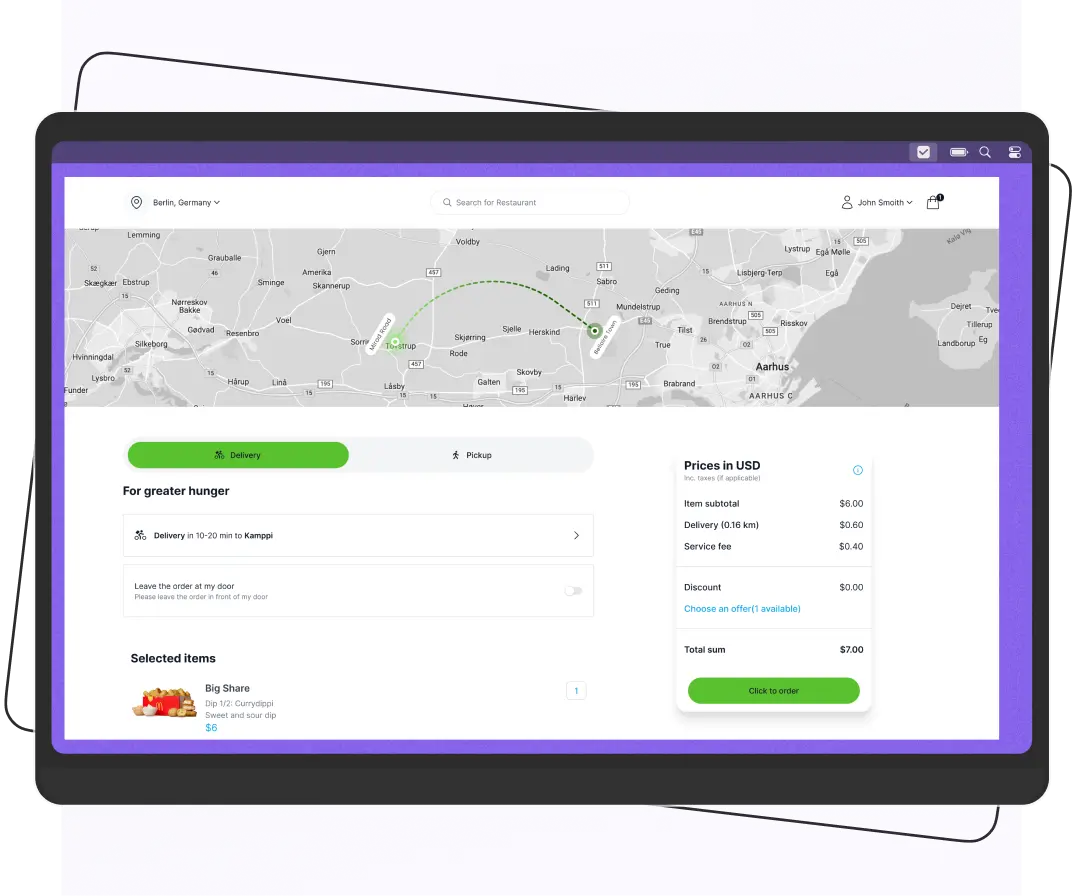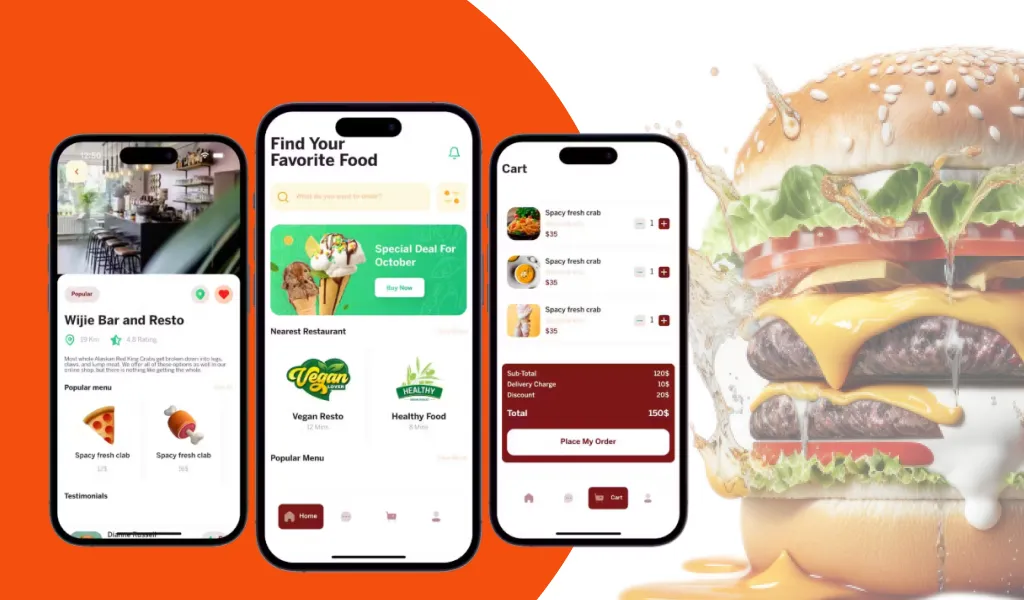
Restaurant apps have become just as essential as the menu itself. From browsing dishes to placing an order in seconds, these apps have changed the way customers interact with restaurants.
In fact, studies show that nearly two-thirds of customers use food ordering apps regularly for delivery or takeout. It highlights how vital they’ve become for growth and competitiveness in the food industry.
But having an app isn’t enough. To truly succeed, it’s important to understand how restaurant apps work, the process, the technology, and the value they deliver to both customers and restaurants.
In this blog, we’ll explore exactly how restaurant apps work, the benefits they bring, and much more.
Supercharge your deliveries with Enatega.
Launch NowWhat is a Restaurant App?
A restaurant app is a mobile application that acts as a digital bridge between customers and restaurants. It allows users to browse menus, place orders, make reservations, and even pay online, all from their smartphones.
For restaurants, these apps manage operations and increase sales by providing a better dining or delivery experience.
Smaller restaurant chains, like Flour Bakery in Boston, have done well by creating a local restaurant app. This app lets customers earn and use loyalty points.
Different Types of Restaurant Apps
Below is a list of the different types of restaurant apps.
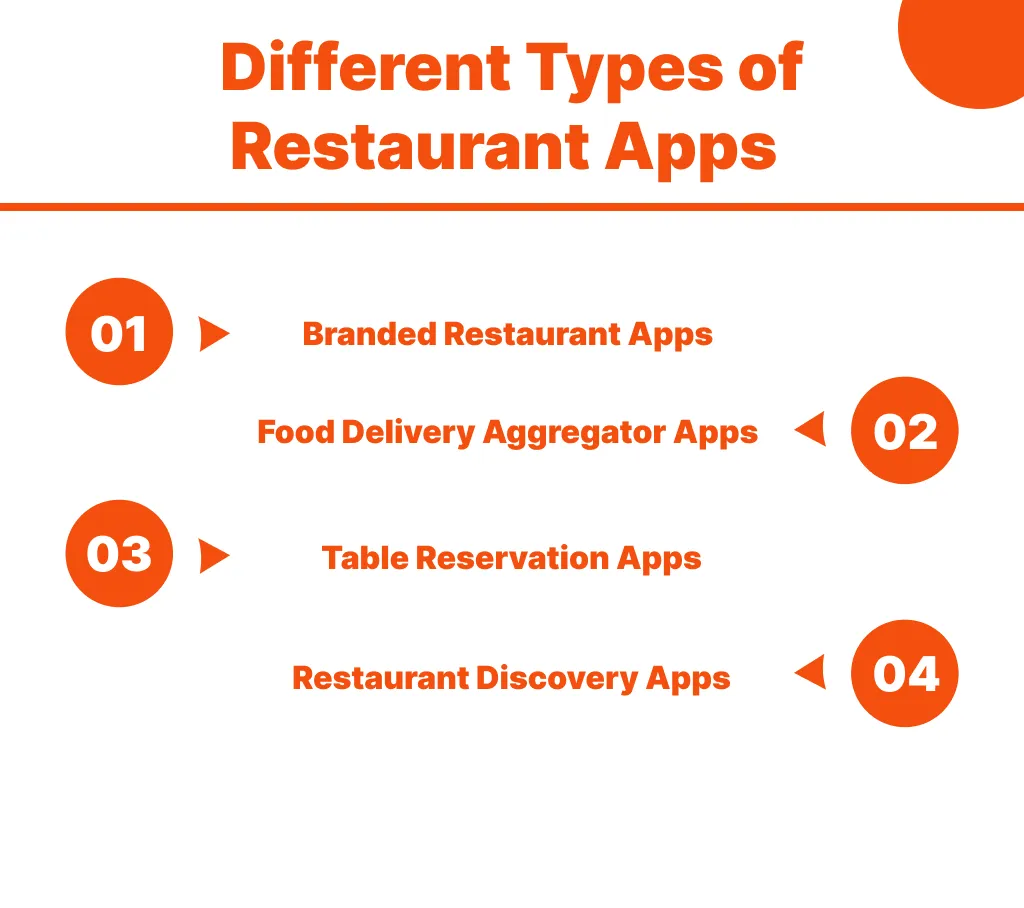
Branded Restaurant Apps
These apps are developed and owned by a specific restaurant or chain (e.g., Domino’s, Starbucks). They focus on promoting their own menu, loyalty programs, and direct customer relationships.
Food Delivery Aggregator Apps
Platforms like Uber Eats, DoorDash, or Foodpanda that list multiple restaurants in one app. Customers can explore a wide range of cuisines, compare prices, and order from different places.
Table Reservation Apps
Apps such as OpenTable or Resy allow customers to book a table in advance. Useful for dine-in experiences, especially in high-demand restaurants.
Restaurant Discovery Apps
Apps like Zomato or Yelp help customers discover new restaurants, read reviews, and check ratings before dining or ordering.
Restaurant Apps vs. Traditional Dining
Look at the table below and understand the differences between restaurant apps and traditional dining.
| Aspect | Restaurant Apps | Traditional Dining |
| Convenience | Order anytime, anywhere with a few taps. | Requires physically visiting the restaurant. |
| Speed | Faster ordering and real-time tracking. | Waiting for the staff to take orders and serve. |
| Payment Options | Multiple (cards, wallets, COD, loyalty points). | Mostly cash or cards at the counter. |
| Customer Experience | Easy digital experience with reviews and ratings. | More human interaction and ambiance. |
| Reach for Restaurants | Wider audience through apps and delivery platforms. | Limited to local walk-in customers. |
How Do Restaurant Apps Work? – Step-by-Step Process
Restaurant apps simplify the entire dining and food delivery experience for both customers and restaurants.
Here’s a step-by-step look at how restaurant apps work.
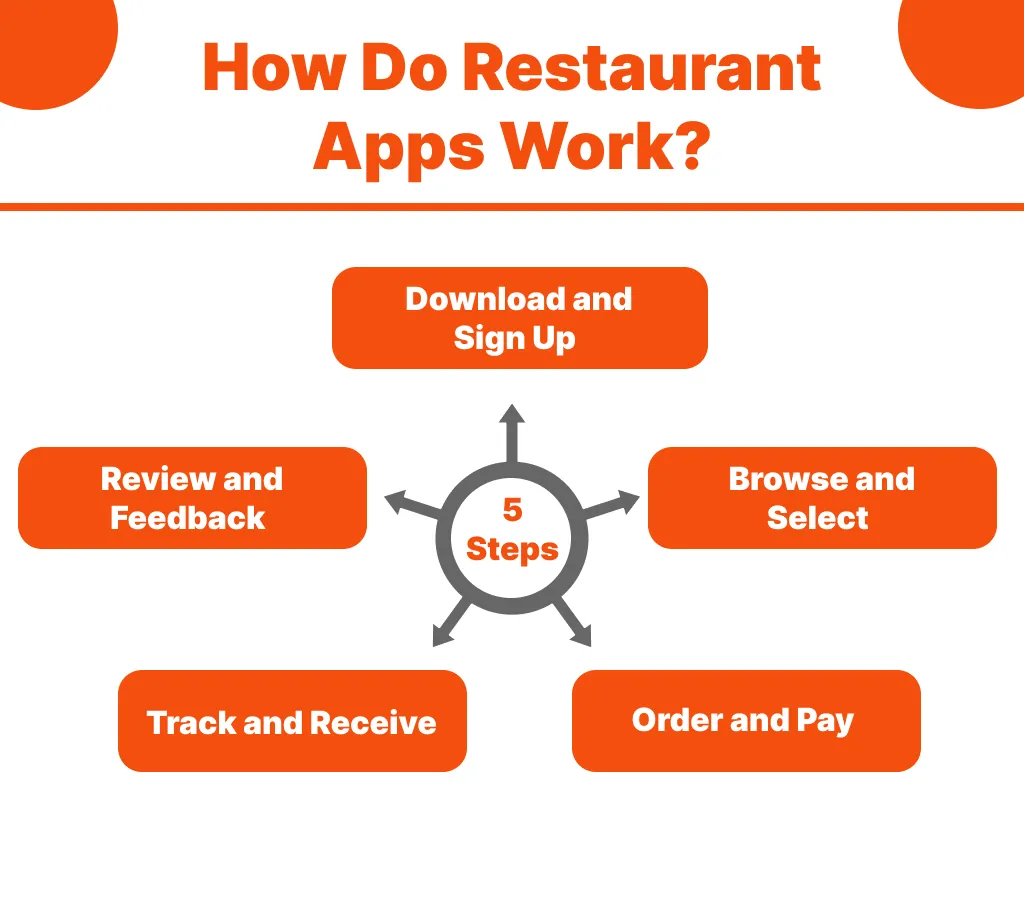
1. Download and Sign Up
Customers download the app from the App Store or Google Play. They sign up using their phone number, email, or social login, and set preferences like delivery address or favorite cuisines.
2. Browse and Select
The user explores the digital menu or list of restaurants. Filters and categories (cuisine type, price range, dietary options) help customers find what they want faster.
3. Order and Pay
After selecting items, customers add them to their cart. They can apply promo codes, choose delivery/pickup options, and pay securely via multiple payment methods: credit/debit card, digital wallets, or even cash on delivery.
4. Track and Receive
The restaurant receives the order through its system and begins preparation. Customers can track order status in real time, from food being cooked to the delivery rider heading their way.
5. Review and Feedback
Once the order is completed, users can rate their experience, leave feedback, and even earn loyalty rewards for their next purchase.
Benefits of Restaurant Apps
Restaurant apps offer several benefits to customers and business owners, such as:
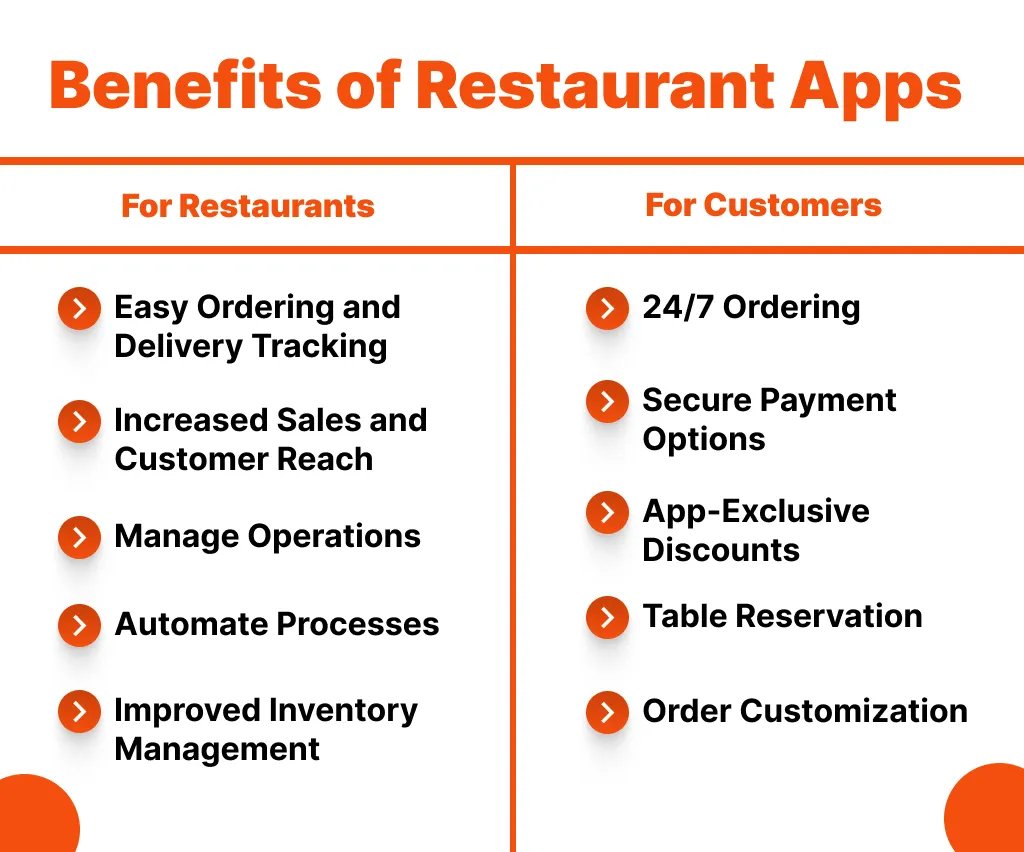
For Restaurants
- Easy Ordering and Delivery Tracking
The restaurant app helps you manage the ordering process to improve customer satisfaction. It also allows you to track deliveries in real-time to ensure timely service and improve operational efficiency.
For example, a customer sitting at home, scrolling through a user-friendly app. They can browse the menu, customize their order, and track their delivery in real-time. This ease makes it more likely for them to order again.
- Increased Sales and Customer Reach
By offering online ordering, restaurants can reach a wider audience beyond walk-in customers. More accessibility often translates into higher revenue and business growth.
- Manage Operations
Restaurant managers can oversee orders, staffing, and customer feedback all in one place. For example, if a dish is running low, the app can alert the kitchen staff to prepare more.
- Automate Processes
No more manual order taking. Reduce the burden of manual tasks by automating key processes. An app can automatically send orders to the kitchen and manage payments, freeing up staff to focus on providing great service.
- Improved Inventory Management
With real-time data, restaurants can keep track of ingredients. If a dish is popular, they can ensure they have enough supplies, reducing waste and increasing efficiency.
For Customers
- 24/7 Ordering
Craving burgers at midnight? No problem! With a restaurant app, customers can place orders anytime, anywhere. It’s like having a restaurant in their pocket.
- Secure Payment Options
Customers can pay confidently through secure payment gateways. Whether it’s a credit card or a digital wallet, their information is safe, making transactions quick and hassle-free.
- App-Exclusive Discounts
Who doesn’t love a good deal? Customers can enjoy special discounts and promotions available only through the app, making their dining experience even better.
- Table Reservation
Planning a special dinner? Customers can reserve a table with just a few taps on their phone, ensuring they have a spot waiting for them.
- Order Customization
Want extra cheese on that burger? No problem! Customers can easily customize their orders to fit their tastes, making their meal exactly how they like it.
Features of the Restaurant App
To build a successful restaurant app, you need features that make your app unique. Below are the key features every restaurant app should include.

Push Notifications
Push notifications are one of the most powerful tools for customer engagement and marketing. They keep users updated and encourage them to return to your app.
With push notifications, you can do these:
- Order Updates: Notify customers when their order is confirmed, prepared, and out for delivery.
- Promotions: Send timely offers, discounts, or meal deals, especially during lunch and dinner hours.
- Transparency: Keep users informed every step of the way, ensuring trust and a smooth experience.
Example: A well-timed push notification at 7 PM can remind users to skip cooking and order dinner with just one tap.
Customer Management
Customer management is a critical aspect of running a successful business. This feature allows restaurants to manage customer information and interactions from a single platform. It helps track order history, preferences, and loyalty, making it easier to deliver personalized experiences.
Order Management
A restaurant app should include an order management system that acts as the central hub for all orders. It involves tracking and managing customer orders from the time they are placed to the time they are fulfilled.
With this restaurant app feature, you can:
- Integrate online and offline orders in one place.
- Tracks sales in real time.
- Optimize all aspects of restaurant operations, from taking orders to delivering.
Menu Management
Ever tried updating your restaurant menu during peak hours with a printer that keeps getting jammed? Gone are the days of reprinting menus for every small change.
With digital menu management:
- Restaurants can update prices, items, and specials instantly.
- Changes are reflected across the app in real time.
- Staff avoid miscommunication, and customers always see the latest menu.
Inventory Management
With restaurant inventory management software, you will be able to keep track of what is in stock and what is not. Inventory management ensures restaurants never run out of key ingredients or overstock unnecessary items. They can easily track food and supplies in real time, which helps them reduce waste and improve cost efficiency.
In-app Chat Support
In-app chat support is essential for restaurant apps and an effective way to talk to your customers and engage them. It offers a quick and direct way for customers to get answers to their queries. It can be in any form, such as live chat, AI-powered bots, tutorials, and FAQs embedded within the app.
Marketing and Promotions
An integrated marketing feature helps restaurants run campaigns directly through the app. This feature allows them to:
- Send personalized offers.
- Launch loyalty and referral programs.
- Promote new menu items or seasonal specials.
Feedback Management
Online reviews give restaurant owners quick access to information, which helps them make informed decisions faster. A review and rating system allows customers to share their experiences directly in the app.
Research shows 72% of consumers trust online reviews as much as personal recommendations.
This feature of the restaurant app helps them to build trust and attract new customers. Also, the constructive feedback helps restaurants address issues quickly.
FAQs
1. How does the food delivery app’s algorithm work?
The food delivery app’s algorithm uses user preferences, real-time location data, and order history to suggest restaurants, optimize delivery routes, and estimate delivery times.
2. How much do food delivery apps charge restaurants?
Food delivery apps charge restaurants a commission fee that ranges from 15% to 30% of the order total, along with potential additional fees for services like marketing or delivery.
3. How much does a restaurant app cost?
The cost of developing a restaurant app can range from $10,000 to $100,000 or more. However, it depends on factors like features, complexity, design, and platform (iOS, Android, or both). Ongoing maintenance and updates can also add to the total cost.
4. What’s the highest-paying food delivery app?
The highest-paying food delivery app can vary by region and market conditions, but generally, apps like DoorDash and Uber Eats are known for offering competitive pay rates for drivers. It is often influenced by factors such as demand, tips, and promotions.
Supercharge your deliveries with Enatega.
Launch NowConclusion
Restaurant apps have redefined the food delivery industry by making the entire experience faster, smarter, and more convenient. From managing orders to engaging customers with personalized promotions, the right app has become essential for driving growth and building long-term loyalty.
Now that you understand how restaurant apps work, the next step is bringing your own idea to life. At Enatega, our experts specialize in creating customized, high-performance restaurant apps designed to match your business needs.
Book a free demo today and discover how Enatega can help you build a restaurant app that grows your business and keeps your customers coming back for more.












 IOS
IOS Android
Android Web
Web
